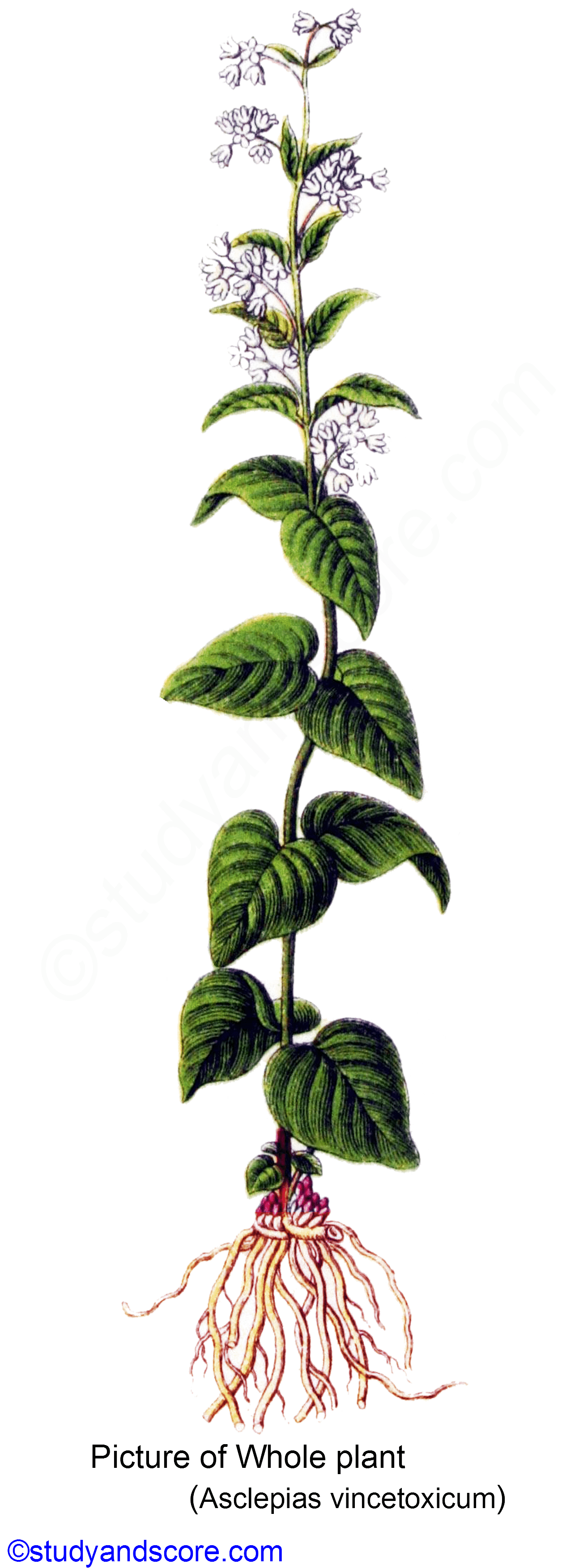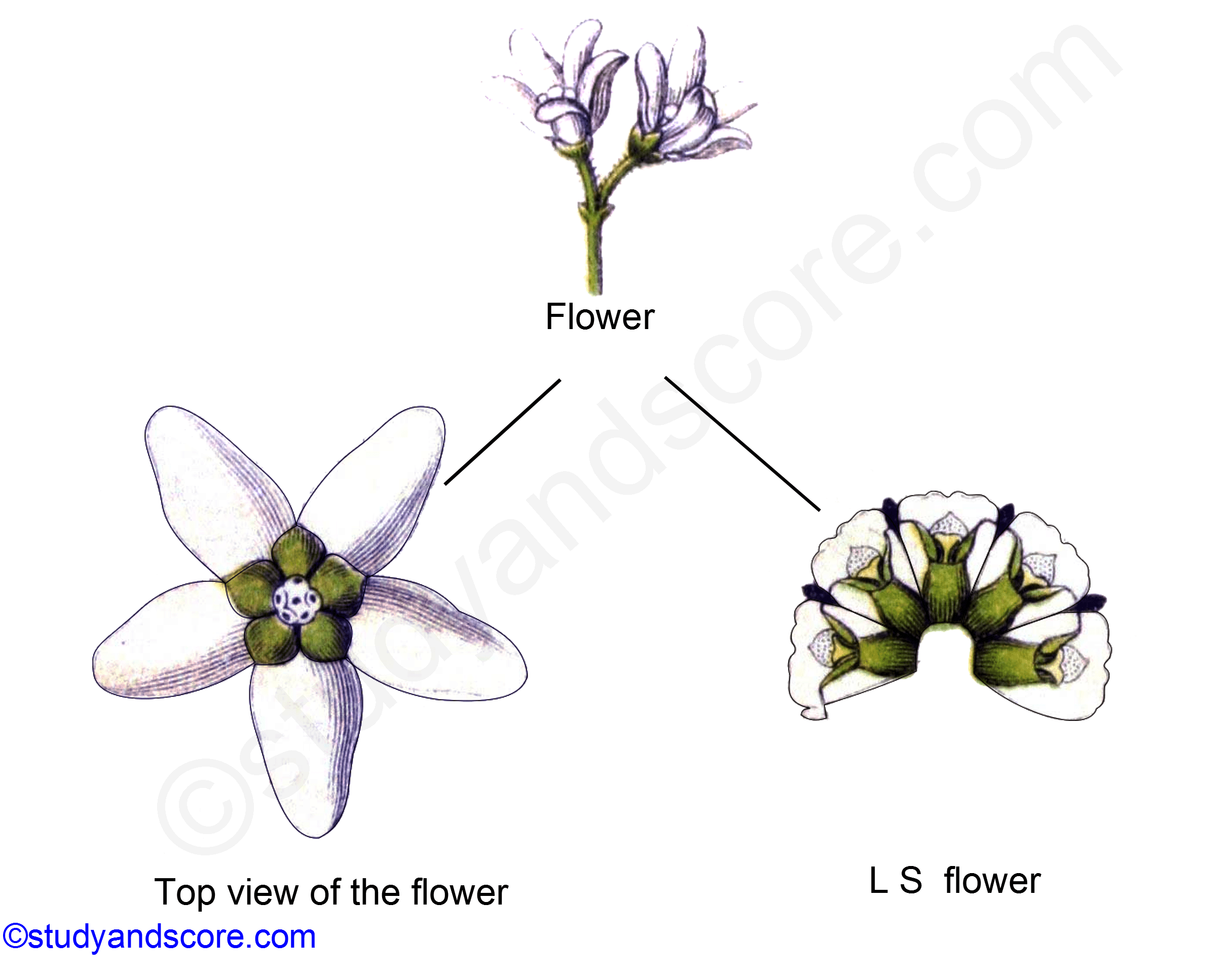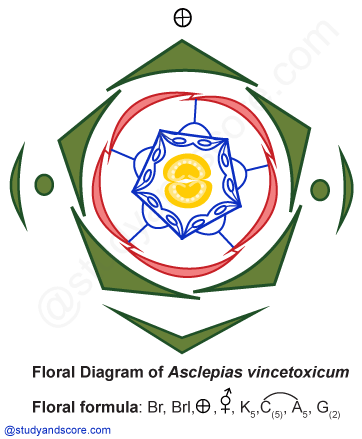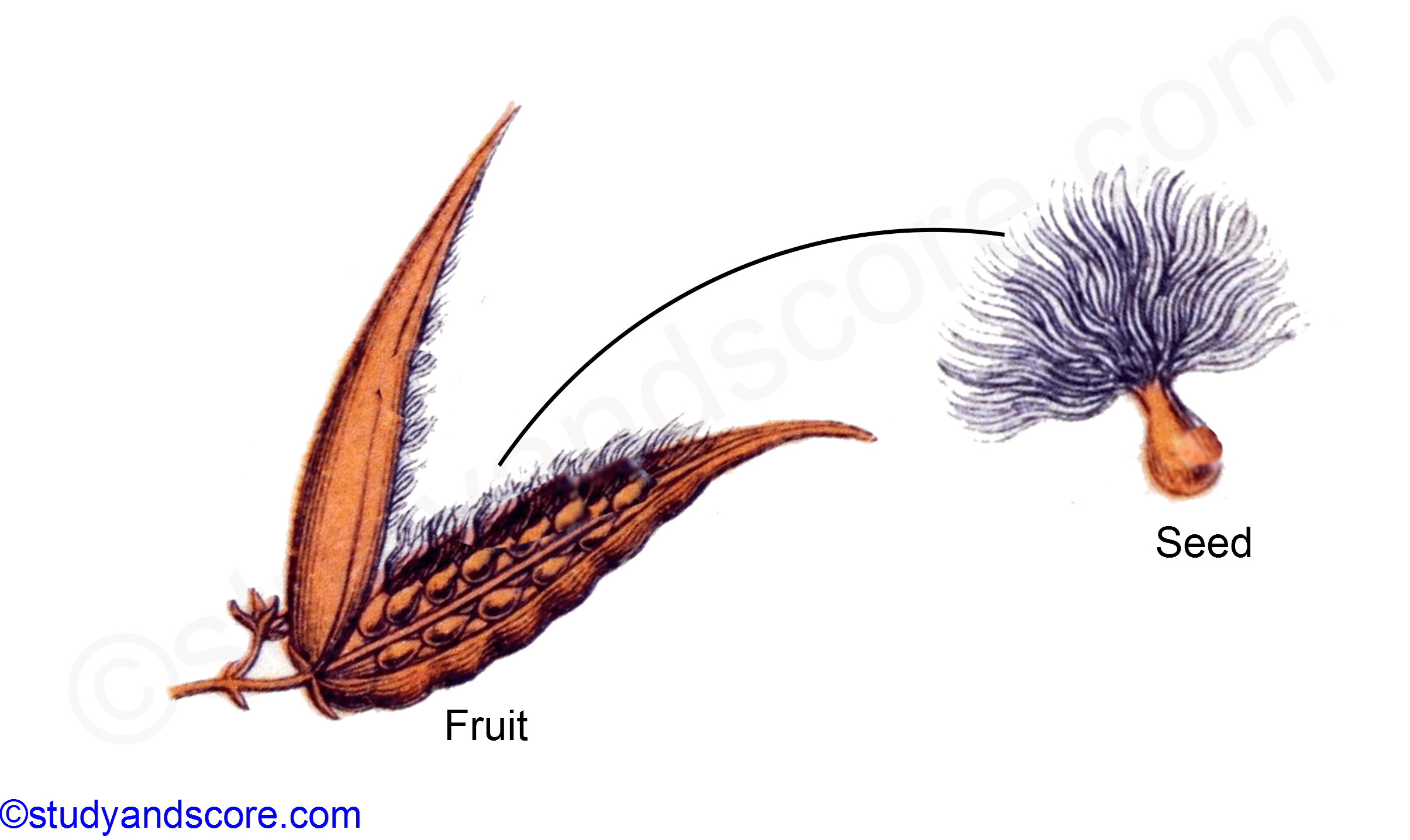Asclepiadaceae is also known as milky weed family. As per APG II, family Asclepiadaceae is now treated as a subfamily Asclepiadoideae under family Apocynaceae. APG stands for Angiosperm Phylogeny Group, which is an informal international group of systematic botanists who work together for an agreement on the taxonomy of flowering plants as per the latest phylogenetic studies.
Number of genera: This family includes 384 genera and about 2900 species
Propagation type: Fruit (dehisced) or seed
Distribution: The members of this family are widely distributed in tropical and sub-tropical regions of the world. They are especially found in the drier parts of Africa and South America. In India this family is represented by 53 genera and about 250 species. These plants occur mostly in Himalayas, southern and western India.

Habitat: Members of this family are mostly mesophytes and some xerophytes are also known in this family.
Habit: These plants are perennial herbs (Asclepias), Shrubs (Calotropis) or woody climbers (Tylophora, daemia, Leptademia). Dischidia, is an epiphytic climber. Sometimes the plants are succulent (Hoya) or xerophytic with Cactus like habit (Stapelia).
Root system: The members of this family have tap root system. Perennial root stock is commonly present and sometimes the roots are fleshy and tuberous.
Stem: Stem is erect, branched and woody in lower portions. The vascular plants are bi-collateral and the plants contain milky juice present in branching laticiferous tubes.
Leaf: The leaves are opposite, decussate, simple entire and extipulate. In Xerophytes (Stapelia) leaves are reduced to spines or scales. A thick waxy covering is found on the leaves of Calotropis procera. The petiole is pulvinous in Cryptostegia grandifolra. In Dischida, one of the pair of leaves is modified into a pitched to collect debris and water.

Inflorescence: The inflorescence is usually a dichasial cyme, arising in the leaf axil or sometimes it is a racemose or umbellateas in Asclepias and Calotropis.
Flower: The flowers are perfect, hermaphrodite, bracteates, bracteolate, complete, bisexual, actinomorphic, pentamerous and hypogynous. The flowers are comparatively large in Stapelia.
Calyx: The calyx consists of five sepals which are united below to form short calyx tube. It shows imbricate or valvate type of aestivation.
Corolla: The corolla has five united petals (gamopetalous) which may be rotate (Calotropis) or companulate or funnel form. They show valvate or twisted aestivation. The corolla tube is in the form of corona with ring of hairs or scale. In Ceropegia the straight or curved corolla is swollen at the base. The corolla lobes are valvate or generally twisted to right. The corolla tube is with a corona which is in the form of a ring of hairs.

Androecium: Stamens are five, epipetalous and inserted at or near the base of the corolla tube. The filaments may be free or may be united to form a tube round the style.
Gynoecium: The gynoecium is bicarpellary and the ovaries of the two carpels are free. The styles are united at their apices and the stigma has five lateral surfaces. The ovary of each carpel is unilocular with single placenta bearing numerous anatropous pendulous ovules. The placentation is marginal.
Pollination: The flowers are perfectly adapted for entomophily or pollination by insects. The pollination mechanism in this family is unique in many ways in view of complicated structure of the flower.
In subfamily Periploceae, the pollen is transferred on to the spoon shaped translators which have a sticky basal disc. The insect while returning from the flower carries the whole translator. The pollen contents may get deposited on the stigmatic surface when the same insect visits another flower.
In subfamily Euasclepiadeae, the insect visiting the flower for nectar traps its legs or proboscis between the osmotically elastic anther wings. The insect while returning carries the sutured corpusculum along with pollen. When this insect visits another flower, the pollen is transferred to the receptive surface of the stigma.

Fruit: The fruit is of two follicles which are close together or divergent. They vary in shape and are membranous to woody.
Seed: The seeds are flattened and commonly bear a terminal tuft of white long silky hair. They help in dispersal. The endosperm is dense and embryo is large.
Family Asclepiadaceae is also called as Milky weed family. This family has more than 384 genera and around 2900 species. The members of this family are distributed throughout the world. The special feature of this family is the pollination mechanism. This mechanism is unique owing to the complicate structure of the flower.
The following is a list of some important members of family Asclepiacaceae, arranged alphabetically.
The family Asclepiadaceae contributes several ornamental as well as drug yielding plants.
- Share with your friends! -
Login to post your comment here...
- or with social Account -